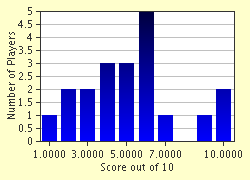Quiz Answer Key and Fun Facts
1. Modern artificial insemination of animals started in Russia around 1899. During which decade did the commercial practice of artificial insemination of animals start?
2. Three main factors led to the rapid development of commercial AI. Which of the following was NOT one of these factors?
3. Which of the following animals might an artificial insemination technician NOT be permitted to work on?
4. Sperm will only last five minutes or so when exposed to air. Liquid semen keeps for a few days. However, freezing semen can extend the life of the semen for years, although there will be damage to some of the semen during the freezing process. If frozen, what is semen normally stored in?
5. What is the name given to the 'dose' of frozen semen used in artificial insemination?
6. When is an animal usually inseminated by the AI technician?
7. Which of the following is NOT used to help with timing for artificial insemination?
8. Which of the following is NOT a reason why artificial insemination is used?
9. Mares used in competitions present the horse owners with the problem as mares should not train during pregnancy. How can this be solved?
10. None of this can happen without semen from the male of the species. Does the job of the artificial insemination technician typically involve obtaining the semen?
Source: Author
suomy
This quiz was reviewed by FunTrivia editor
bloomsby before going online.
Any errors found in FunTrivia content are routinely corrected through our feedback system.

